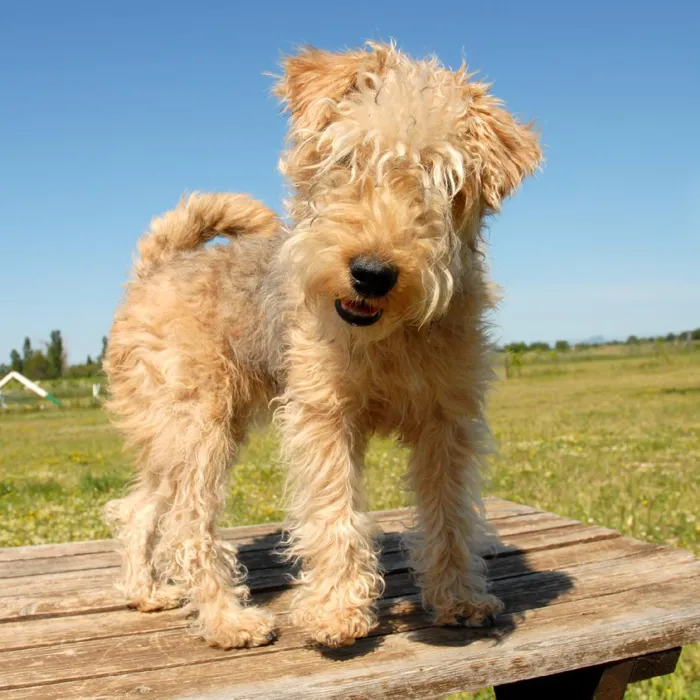Lakeland Terrier

A bold, zesty “big dog in a small package,” the Lakeland Terrier, named for the Lake District of his native England, was once a farmer’s dog bred to work in packs on sheep-stealing foxes. The Lakie's coat is hard, wiry, and low-shedding.

Ask About Lakeland Terrier ?
Breed Traits
General Appearance
The Lakeland Terrier was bred to hunt vermin in the rugged shale mountains of the Lake District of northern England. He is a small, workmanlike dog of square, sturdy build. His body is deep and relatively narrow, which allows him to squeeze into rocky dens. He has sufficient length of leg under him to cover rough ground easily. His neck is long, leading smoothly into high withers and a short topline ending in a high tail set. His attitude is gay, friendly, and self-confident, but not overly aggressive. He is alert and ready to go. His movement is lithe and graceful, with a straight-ahead, free stride of good length. His head is rectangular, jaws are powerful, and ears are V-shaped. A dense, wiry coat is finished off with longer furnishings on muzzle and legs.
Size, Proportion, Substance
Head
Neck, Topline, Body
Forequarters
Hindquarters
Coat
Color
Gait
Temperament
Disqualifications
Group
Terrier
About
History
Standard
Nutrition
Grooming
Exercise
Training
Health
All pets have found there homes! Sign up to be notified when new pets are added so you don't miss out.


